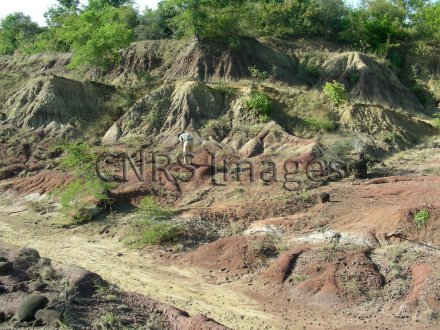Production year
2008

© Laurent MARIVAUX/ISEM/CNRS Images
20090001_1062
Localité fossilifère de Ganlé, petit village du Myanmar situé à 3 heures de route du site touristique de Bagan puis à 5 heures à dos d'éléphant ou en char à boeufs. C'est là qu'a été découvert un primate "Ganlea megacanina" et cette découverte conforte l'hypothèse d'une origine asiatique, et non africaine, de la lignée commune entre les hommes et les singes (primates anthropoïdes). Ganlea est agé de 37 millions d'années et possède une aptitude aujourd'hui observée chez les singes modernes, et non chez les lémuriens : il ouvre et mange des graines d'une manière spécifique, au moyen de sa canine démesurée, comme certains singes actuels d'Amérique du Sud.
The use of media visible on the CNRS Images Platform can be granted on request. Any reproduction or representation is forbidden without prior authorization from CNRS Images (except for resources under Creative Commons license).
No modification of an image may be made without the prior consent of CNRS Images.
No use of an image for advertising purposes or distribution to a third party may be made without the prior agreement of CNRS Images.
For more information, please consult our general conditions
2008
Our work is guided by the way scientists question the world around them and we translate their research into images to help people to understand the world better and to awaken their curiosity and wonderment.